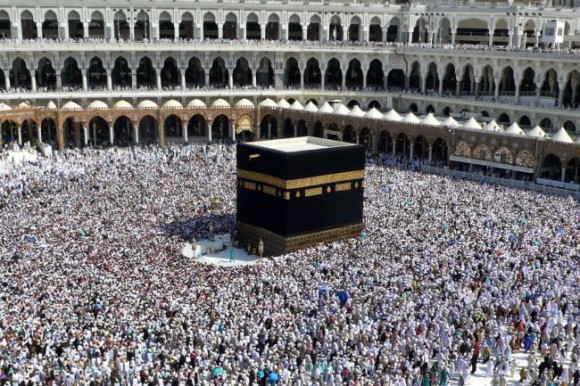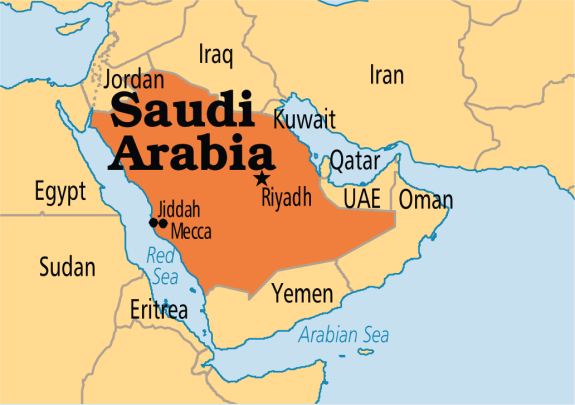President Barack Obama is scheduled to visit Saudi Arabia, a key U.S. ally in the Arab world, next month. Before he leaves Washington, D.C., he should read Karen Elliott House’s substantive book, On Saudi Arabia: Its People, Past, Religion, Fault Lines — And Future, published by Alfred A. Knopf.
One of the most penetrating works of its kind in recent years, this volume, written by a seasoned American reporter, should be required reading for anyone seriously interested in this theocratic kingdom. House, who spent three decades observing Saudi Arabia in her capacity as a diplomatic correspondent and foreign editor of The Wall Street Journal, explores its tribal past, complicated present and uncertain future.
Autocratically ruled by the extremely conservative House of Saud, the last significant absolute monarchy in the world, Saudi Arabia was created in 1932 by Abdul Aziz bin Al Saud and a cohort of tribal and religious leaders. One of Al Saud’s sons, King Abdullah, is Saudi Arabia’s current head of state.
Like his predecessors, King Abdullah’s legitimacy derives from the assumption that the House of Saud, a family business, personifies, protects and propagates the supposedly one true religion, Islam. But many Saudis, both modernists and conservatives, are offended by the Al Saud’s exploitation of Islam to maintain their interests.

Al Saud family members hold all the important posts and administer the country in conjunction with “an unholy alliance of profligate princes and pliable religious leaders,” she writes in a typically scathing comment.
House compares Saudi Arabia to the Soviet Union in its terminal stages, when a succession of aged, infirm, corrupt and out-of-touch leaders were at its helm and could not hold back the tides of progress and change. By her reckoning, most Saudis crave not for democracy, which is conspicuously absent, but for a just and open society and the rule of law.
Claiming that decay is rotting the very foundations of the state and threatening its very future, House points out that 40 percent of Saudis live in poverty and at least 60 percent cannot afford a home — this in a nation whose annual oil revenue runs in excess of $200 billion and whose foreign currency holdings are estimated to be in the range of $400 billion.
Saudi Arabia’s vast oil reserves actually inhibit economic development because they discourage competitiveness in any other sphere. The flow of oil, however, props up a creaky welfare state that provides poor-quality free education and health care, not to mention cheap energy.
But what the pampered royal family takes in from oil wealth and spends on itself is a secret. “Not surprisingly, Saudis increasingly are demanding not only that more of the wealth be spent on better government services, but also a transparent accounting of the nation’s oil revenue, which they believe belongs to the people,” House observes.
Islam, once a pillar of continuity and stability in Saudi Arabia, is now a source of division, she explains.

The House of Saud has politicized the Saudi brand of Islam, which is rooted in a reactionary doctrine known as Wahhabism. For two decades, the Al Sauds supported jihadists at home and abroad. But when they realized that radical Islam was a threat, they switched course and promoted a kinder, gentler form of Islam.
A few days ago, King Abdullah issued a decree that punishes Saudis who fight in overseas wars. The Saudi elite fears that such fighters may return radicalized and turn their weapons against the monarchy.
These tectonic shifts have puzzled and outraged Saudis, she notes.
For much of Saudi history, the Wahhabi sect provided the only valid interpretation of Islam. But with the advent of the Internet, this notion rapidly crumbling.
The role of women in Saudi society is also a problem: “To be born a woman in Saudi Arabia is at best to endure a life-long sentence of surveillance by a male relative and to take no action outside the household without male approval.”

By puberty, a woman is expected to swaddle her body in an abaya and veil her face. And she is not allowed to drive a car on the questionable grounds that she may be prey to mistreatment by Saudi men.
Saudi men are not bound by such onerous restrictions, but they have almost no leisure options to fall back on. Cinemas are banned, concerts are outlawed and dating is forbidden. Shopping malls are off-limits to young men unless they are accompanied by a female relative.
“Saudi youth, whether liberal, traditional or fundamental, share three characteristics: most are alienated, undereducated and unemployed.”
According to House, one-third of Saudi Arabia’s population consists of foreigners, who command two-thirds of the jobs. Unemployment among Saudis is rampant. As she puts it, “High birth rates, poor education, a male aversion to manual labor or service roles, social strictures against women working, low wages accepted by foreigners and deep structural rigidities in the economy, compounded by pervasive corruption, have all led to a decline in living standards and to the toxic unemployment problem among young Saudis.”
House has nothing but contempt for the senior Saudi leadership: “Like a deer in the headlights, it is frozen in time and place.” Since time immemorial, Saudi rulers have resorted to a tactic that has served them well — “keeping society divided, playing one group against another (and) dispensing large sums of money to placate angry citizens.”
In the immediate aftermath of the Arab Spring rebellions, King Abdullah dispensed $130 billion to keep a lid on discontent among the masses. “The new largesse doubtless has bought a bit of time,” she says, “but it will do nothing to revitalize the stultified economy. Rather, it simply increases dependency on unproductive government jobs and royal handouts, further sapping Saudi enterprise.”
House’s chapter on Saudi foreign policy is instructive.
“Only one interest guides Saudi policy, and that is the survival of the House of Saud,” she asserts.
Since the Arab terrorist attacks on the United States on Sept. 11, 2001, in which 15 Saudis participated, the Saudi government has faced a deepening dilemma. On the one hand, the House of Saud has coddled or catered to Islamic fundamentalists to protect itself. On the other hand, Saudi Arabia’s attitude has upset its chief protector, the United States.
In closing, House elucidates Saudi Arabia’s most pressing problems, from joblessness among youth to the one-dimensional nature of the oil-based Saudi economy, and lists ways of addressing them constructively.
She calls on the Saudi regime to adopt elements of political pluralism which, admittedly, fall short of the norms of Western democracy. She suggests major economic reforms. And she urges the Saudis to curb the influence of the conservative clergy in the realm of education and to make women a productive part of the work force.
This clarion call for modernization will probably fall on deaf ears, she concedes. “Reforms of this magnitude would amount to the dismantling of traditional Saudi Arabia,” she writes. “So it is almost impossible to imagine the royal family undertaking them.”
If House’s analysis stands the test of time, Saudi Arabia’s future is indeed bleak.

